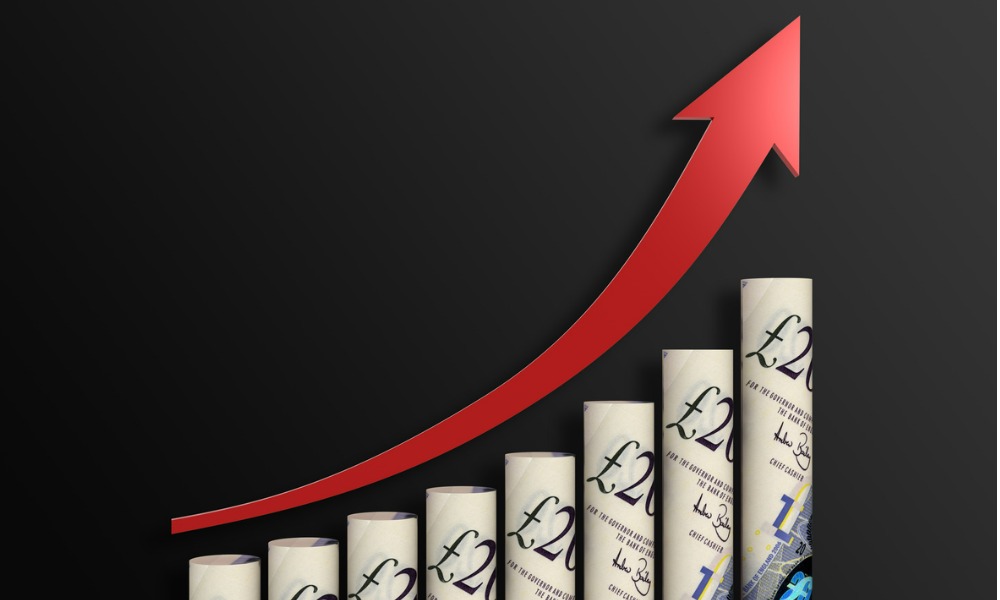We're currently enduring the highest 12-month inflation rate since the series began

According to OFGEM, from April 2022, the energy cap, which is currently at £1,277 a year, will be increased.
Those on default tariffs paying by direct debit will see an average increase of £693, from £1,277 to £1,971 per year, and prepayment customers will see an average increase of £708, from £1,309 to £2,017.
At the same time national insurance contributions for the employed and self-employed will rise by 1.25% to fund social care. This is on top of inflation - the January 2022 CPI figure was 5.5%, up from 5.4% in December.
This is the highest CPI 12-month inflation rate in the National Statistics series, which began in January 1997, and forecasters are projecting it may peak above this level in April.
“Since the January CPI figure was published, we have seen a disaster unfold in Ukraine which is forecast to further push up energy prices and wider inflation, projected to be over 8% this spring,” said Eileen Wheatley, head of consumer acquisition at Loughborough Building Society.
“This has caused typical household incomes across Britain to fall by 4% in the coming financial year, 2022-23, the sharpest fall since the mid-1970s, according to the Resolution Foundation’s annual Living Standards Outlook for 2022.”
Thanks to the invasion of Ukraine by Russia, there have been further large increases in energy and other commodity prices - including food prices.
Read next: Mortgage firms get behind Ukraine appeal
The conflict is also likely to increase global supply chain disruptions, and has upped the uncertainty around the economic outlook significantly.
Wheatley went on to outline that inflation across 2022-23 as a whole could be 7.6%, significantly above the 6.2% forecast by the Bank of England just last month.
In addition, at the back end of last week, the bank’s Monetary Policy Committee (MPC) voted to increase the bank rate by 0.25 percentage points, from 0.5% to 0.75%.
The increase is the third consecutive jump since December, when the MPC elected to up rates from 0.1% to 0.25%, and then from 0.25% to 0.5% in February. The MPC members voted, eight to one, in favour of the rate hike, with the lone dissenting member preferring to maintain the bank rate at 0.5%.
What is the impact on existing mortgage borrowers?
Wheatley explained that for members at Loughborough Building Society coming to the end of a product offer, whether discount or fixed, the lender has a range of exclusive loyalty replacement products for existing members which are “advantageously priced.”
“The most immediate effect of the inflationary pressures is likely to be felt by existing borrowers as squeezed household budgets may see some struggle to pay their mortgage,” Wheatley added.
Meanwhile, an estimated eight in 10 mortgage holders are on a fixed rate, which means these people will continue to pay the same each month until their fixed rate period ends.
The 20% on variable rate mortgages are likely to see their payments rise, but while this is the third rate rise since December, the increase in their mortgage payments is expected to be modest.
Wheatley went on to detail that the society will continue to encourage any of its members in that position to contact them as early as possible as she said this maximises the help it can offer.
She added: “Repossession is always the absolute final resort, so we offer tailored support and forbearance through a range of tools to avoid that happening.”
What is the impact on new mortgage borrowers?
Turning to the impact on potential new borrowers, Wheatley said the situation is being kept under review.
“There may be a dip market wide in mortgage applications as potential home buyers reflect on the current concerns of rising interest rates, living costs and general economic uncertainty created by the war in Ukraine,” she said.
Wheatley explained that the rise in interest rates and living costs will have an impact due to the mortgage affordability tests which have been in place since April 2014 and must be met before any new lending can be agreed.
Read more: Lender affordability criteria takes a hit
However, she noted that the majority of applicants do not borrow to the maximum of what the affordability rules allow.
“Where this happens, borrowers have naturally built in some headroom for any subsequent rise in living costs,” she concluded.



